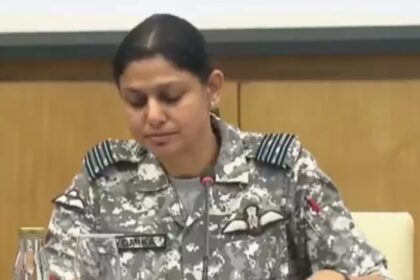Dr Gulshan Bassan
Agriculture has been the most important occupation in India since centuries. Not only has it enabled the people to produce surplus food but also has supported the development of cities and contributed in the growth of economy. Therefore, agriculture sector in India has been given great importance because of its contribution in the economic growth of the country. Currently, the share of agriculture sector in country’s GDP is 18.3%. At the time of independence, this share was more than 50% and 80% of the population earned their livelihood from agriculture. The agriculture in Jammu and Kashmir also went through the similar phases of development. Studies shows that agriculture sector of J&K currently contributes 16% to GSDP and provides employment to 60% of its population. Horticulture is the major sub-sector of agriculture sector of Jammu and Kashmir and contributes immensely to the economy of Union Territory. But over the period of time contribution of agriculture in GDP decreased by more than 30 percent and engagement of the people in agriculture also declined considerably. This decline can be attributed to multiple problems, for example, crop failures, least prices for crops, poor returns on yield and above all-natural calamities. This scenario has pushed many farmers out of this profession and many has committed suicide. In order to address these problems and support the farmers in the scenario of crop failure, the Government of India in 2016 launched Pradhan Mantri Fasal Bhima Yojana (PMFBY). This program was a modification of previous crop insurance schemes that provide monetary assistance to farmers in the event of crop failure, stabilize income, ensure the flow of credit, and encourage farmers to innovate and utilize cutting-edge agricultural techniques.
In Jammu and Kashmir PMFBY was implemented in 2017. Originally, the scheme was launched only in four districts namely Jammu, Samba, Udhampur and Anantnag. Wheat/Barley, Maize, Paddy and Oilseeds were insured crops. It is only in February 2023 that the scheme was extended to all the 20 districts of Jammu and Kashmir. Initially the scheme was implemented on yearly renewal basis. Firstly, it was renewed in 2017, then in 2018 but in 2019 the scheme did not get renewal. Since the Department of Agriculture is responsible for spreading the awareness about the scheme among the farmers in every corner of Union Territory, it organized awareness camps along with their partners i.e concerned Bank and Insurance Companies in different panchayats. Farmers were given detailed lectures on the importance of the scheme and benefits attached to the insurance. Initially the number of farmers registered under the scheme was low but gradually with the spread of information this number started swelling. As per the secondary data up till the Rabi 2021–22 season, 93000 farmers have benefited from the programme and obtained claims totaling Rs. 94 Crores.
Paddy and maize have been designated as the crops for the Kharif 2023 season in both Union Territory regions. In the Jammu and Kashmir regions, wheat and oilseeds are planted for the Rabi season. The farmer is free to switch from any non-notified crop to a notified crop, but he or she must do so by submitting a Sowing Certificate to the authorized authority up to two working days prior to the deadline for enrolment. This season, coverage is planned for around 25% of the area under notified crops. The primary organizations participating in putting the Scheme into action are the J&K Department of Agriculture and Farmers Welfare, Revenue Department, Banks, and Crop Insurance Companies, particularly the Agriculture Insurance Company of India (AIC). IFFCO-TOKIO and Reliance have been chosen as the scheme's implementing agencies, respectively, for the Jammu district and the remaining nine districts of the Jammu division, based on the results of the winning bids. The agencies responsible for carrying out the plan are Reliance for the Anantnag district and AIC for the remaining nine districts of the Kashmir division. The beneficiaries while sharing their experience asserts that the scheme has proven very beneficial for them. The major reason reported for the failure of crops was heavy rain and floods at the time nearest to harvesting of crops. They unanimously felt that although the amount of claim is not at par with the market rates of the crop but still the overall expenditure occurred on the crop is reimbursed by the government through the scheme. One beneficiary in border area of Akhnoor shared the experience of his wheat crop failure. He stated that the heavy rain completely destroyed his standing lush green wheat crop. Fortunately, he had registered for the PMFBY. He called upon the government officials within 72 hours of the event. According to the notified percentage of the loss of Sum Insured of the damaged crop area, a loss assessment survey was carried out by concerned Bank/State or UT Government officials within the following 48 hours, his case was processed and he received the claim by concerned Insurance Companies after couple of months. The experience shared by the beneficiaries is almost same except the variation in time taken by insurance companies in crediting the amount to the farmers account. In some cases, time taken was more than five months and, in some cases, the claims were settled in couple of months. The beneficiaries also appreciated the scheme for the minimal premium. Couple of farmers stated that they have paid only 60 rupees per Kanal premium, while few stated that they paid around 100 rupees as premium per Kanal.
The premium under the scheme is highly subsidized. It is merely 2% of the amount insured for Kharif crops and 1.5% for Rabi crops. The amount insured is calculated on the average of the recent historical yield data of notified crops. Rest of the premium is shared by the Government of India and the government of Union Territory of Jammu. This ambitious scheme launched by GoI, if implemented in effective way, it can help the distressed farmers immensely. But there is no data available regarding the number of beneficiaries registered under PMFBY and number of actual beneficiaries who availed the insurance claim. Also, there is no details available regarding the grants distributed in J&K till date. The author tried to collect this data from different quarters i.e. Director Agriculture Production Department Jammu and his sub ordinate, but they preferred to buy time instead of contributing to bring fact about the success of this prestigious scheme, along with the process of implementation of scheme in J&K. The request for data was denied after repeated calls and messages.
Author is Ph.D. in Public Policy and Public Administration, Central University of Jammu





